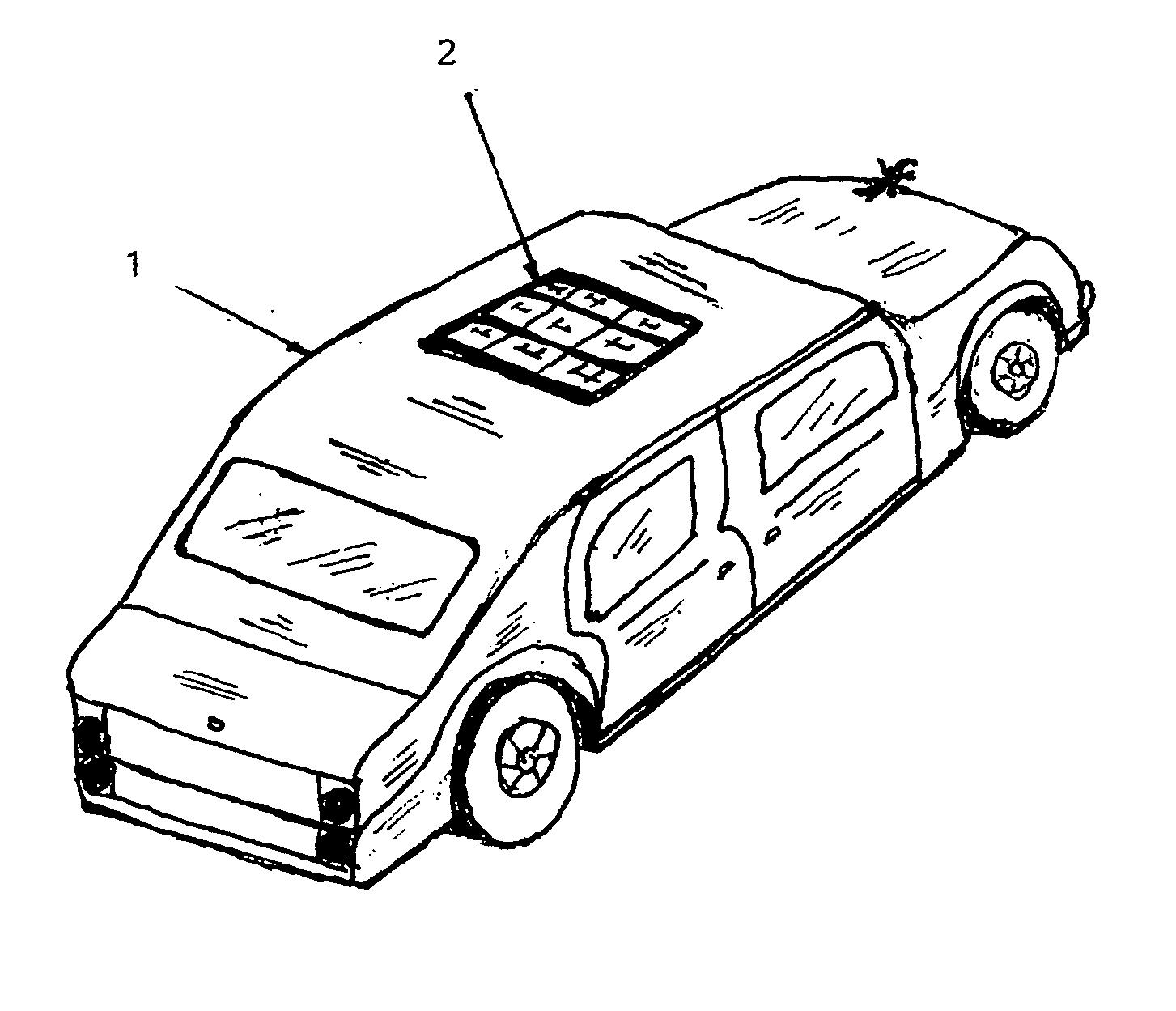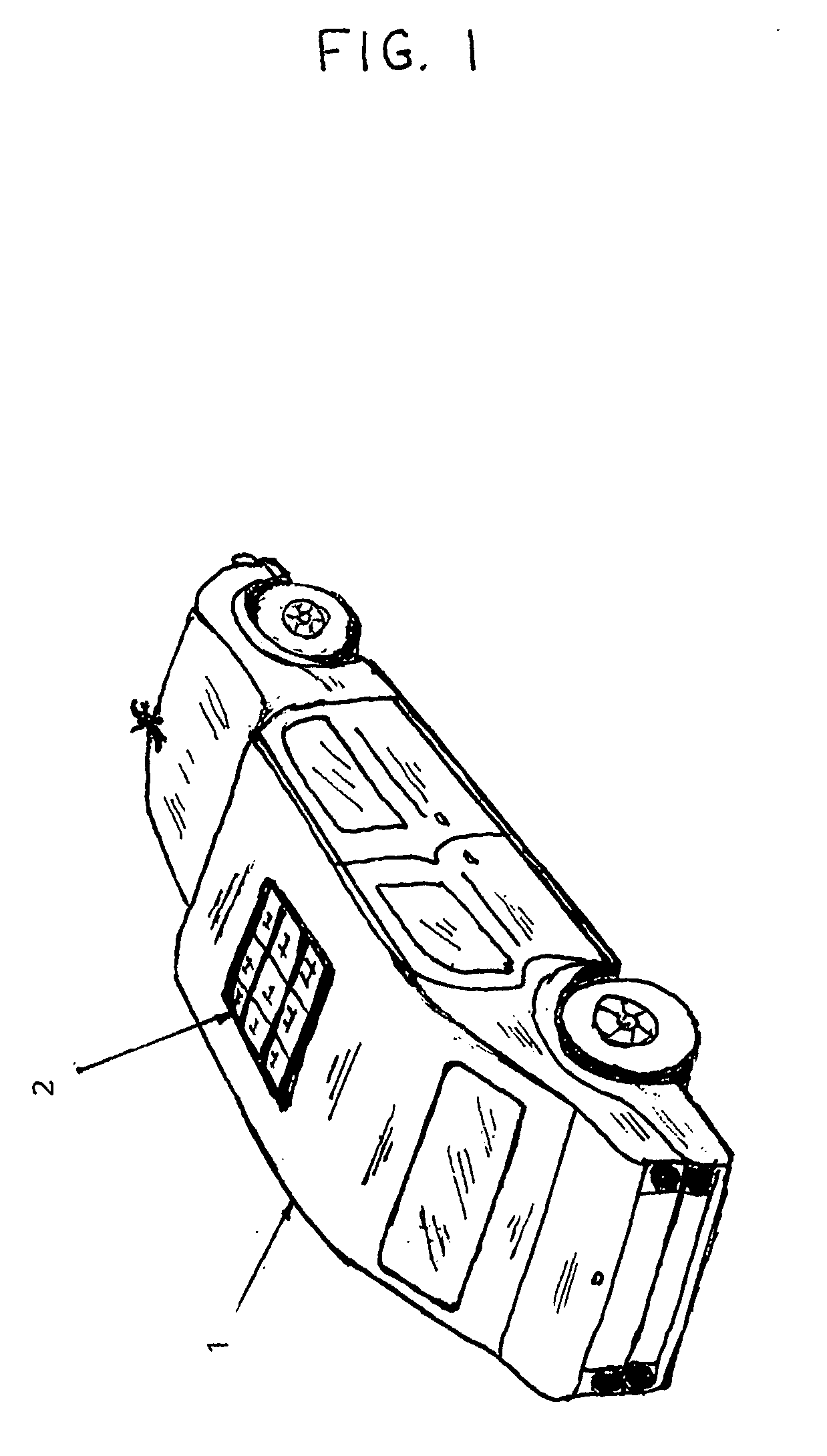System to prevent harm to children, pets or others left in unattended vehicles in hot weather
a technology for children, pets or others, applied in the direction of roofs, instruments, transportation and packaging, etc., can solve the problems of increasing maintenance and repair costs, inconvenience and expense for owners, and unjustified complexity, so as to avoid detracting from the appearance of the vehicle, reduce drag, and be simple and easy to maintain
- Summary
- Abstract
- Description
- Claims
- Application Information
AI Technical Summary
Benefits of technology
Problems solved by technology
Method used
Image
Examples
Embodiment Construction
[0012]FIG. 1 is a sketch of an automobile (1) showing the location of the solar-battery array (2) on the roof. The battery unit is beneath the solar array and is not visible in this view. The assembly is situated in a recessed area of sufficient depth to have the surface of the assembly be flush with the surface of the roof in order to minimize drag when the vehicle is moving and to minimize adverse impact on the appearance of the vehicle.
[0013]FIG. 2 is an expanded view of the components. The solar cell panel (3) is positioned above the smaller battery pact (4). Corner supports (5) separate the solar cell array from the battery pact, which is securely fixed to the floor of the cavity. The two units are connected electrically and alug plug (6) connects the assembly to the vehicle's electrical system through receptacle (7). A gasket (8) seals the assembly from moisture and dirt. The recessed area (9) includes vents (10) at the front and rear to allow air flow from the occupants' area...
PUM
 Login to View More
Login to View More Abstract
Description
Claims
Application Information
 Login to View More
Login to View More - R&D
- Intellectual Property
- Life Sciences
- Materials
- Tech Scout
- Unparalleled Data Quality
- Higher Quality Content
- 60% Fewer Hallucinations
Browse by: Latest US Patents, China's latest patents, Technical Efficacy Thesaurus, Application Domain, Technology Topic, Popular Technical Reports.
© 2025 PatSnap. All rights reserved.Legal|Privacy policy|Modern Slavery Act Transparency Statement|Sitemap|About US| Contact US: help@patsnap.com



